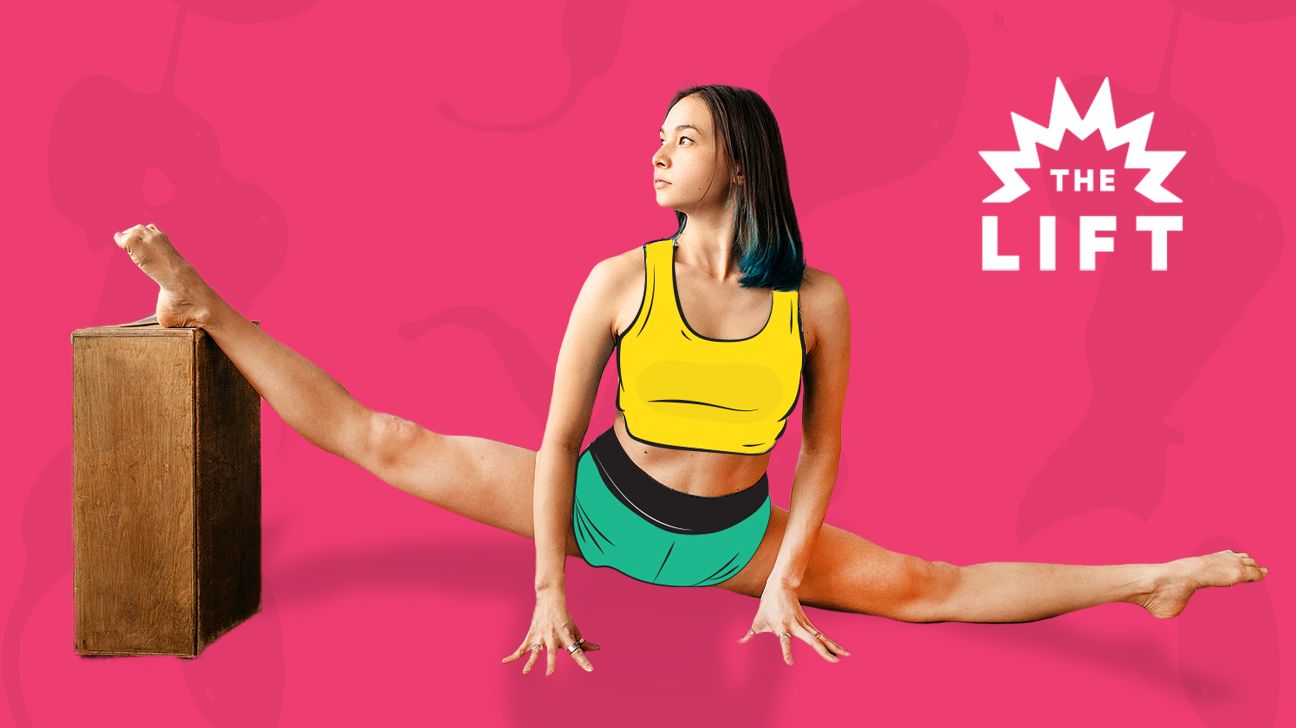When used as an adjective, splits are not so favorable. Split-ends? Split nail? Split heart? No thanks!!
But as a noun? Splits are a bad-ass trick-turned-exercise with some serious bragging rights.
Read on to learn how to work up to a split and how long it takes. (Spoiler alert: It’s longer than 30 days).
The split is a stretch that positions your legs in opposite directions.
Front Splits. Front splits entail one leg going out in front of the body and one leg extending back. When the right leg is the front leg, the split is coined a right split and when the left leg leads, it’s dubbed a left split.
How to do it:
- Start in a kneeling low-lunge position, back leg bent and front leg forward with knee stacked over ankle.
- Place your hands on the ground for support. Then, keeping your chest upright and core tight, extend the front leg while slowly sliding the back leg further behind your torso, unbending the leg as you do.
- Continue lowering until you feel it in your hamstring. Then, hold.
Straddle Splits. Also known as middle splits, straddle splits entail positioning your legs out to either side of your body.
How to do it:
- Start standing in a forward straddle fold, your toes pointed forward.
- Using your upper body and core control to help you move slowly, and keeping legs straight and strong, inch your feet out slowly.
- Continue spreading your legs until you feel a pull in your hamstrings or hips. Then, hold.
- If you can get down low enough, rotate toes up toward the ceiling while walking hands in toward your torso and away from the ground.
The stars of “Cheer” and “Stick It” may make the movement seem easy-peasy, but being able to do a full split requires a pretty lengthy fitness CV.
No matter the variations, splits require some degree of flexibility in the:
- hip adductor and abductors
- hamstrings
- groin
- quads
The deeper the split, the greater the flexibility required.
While flexibility is the main must-have, splits also require some strength in the lower body. As well as strength in your arms if you’re using your upper body to support your weight while your lower into a squat.
That said, “Being able to do splits specifically isn’t directly likely going to make you a faster runner or better lifter,” says physical therapist Grayson Wickham, DPT, CSCS and founder of Movement Vault. But (!) he says splits will improve your mobility, which will be beneficial overall.
Any exercise, yoga pose, or stretch that improves strength and/or mobility in your hip flexors, hamstrings, glutes, and quads is helping you work toward a split, according to Brett Larkin, founder and CEO of Uplifted™️Yoga, an online teacher training yoga school.
Some of these exercises include:
- Seated Forward Fold
- Standing Forward Fold
- Low Lunge
- Lizard Lunge
- Half Splits
- Happy Baby
- Reclined Pigeon Pose
“It’s also helpful to add in some end-range isometric stretches into the mix,” says Wickham. End-range isometric stretches = stretches + muscle flex.
That might look like getting into a half split position, and contract your quad HARD for 5 sets of 10 seconds and resting 10 to 20 seconds between sets.
The benefit? “When you contract your muscles at their end ranges, you prove to your central nervous system that you can handle going that deep, which will result in your body being able to sink deeper,” he explains.
Just wondering: How long should it take to do a full split??
Despite what Blogilates and Pinterest might have you believe, it’ll likely take longer than one month.
“Unless you’re already really, really close to getting a full split, the odds that you’ll progress to a full split in just 30 days are low,” says Wickham.
But don’t throw the baby idea out with the bathwater! Because with 30 days of work, you will get closer to a full split than you were before, he says.
As much as you might want to force your body into a full split, don’t.
“The full split must be achieved gradually,” says Larkin. Mega-emphasis on gradually.
“You don’t want to try to force yourself to get a full split within a predetermined amount of time,” she says. (Like, 30 days, for example). Instead, you want to listen to your body and only go as deep as your body allows you to go comfortably. “It’s not a race,” she says.
And treating it like one could lead to injury, according to Wickham. “If your body isn’t ready for a split and you try to make it do a split, you are elongating a muscle further than it’s able to go, which can result in a muscle strain,” he says. Ouch.
Split training is a beneficial method of mobility, but the value can’t be crammed into one session. It’s something that should be done little by little, says Wickham.
You’ll see more progress doing seven 10-minute split training sessions a week, than doing one 70-minute session per week, he says. Like, a lot more progress.
Your move: Pick a 10-minute chunk of time to get your stretch on every day. Even better: pick a 30-minute chunk of time each day! As Wickham says it, “Splits are serious business that are gonna take some serious work.”






